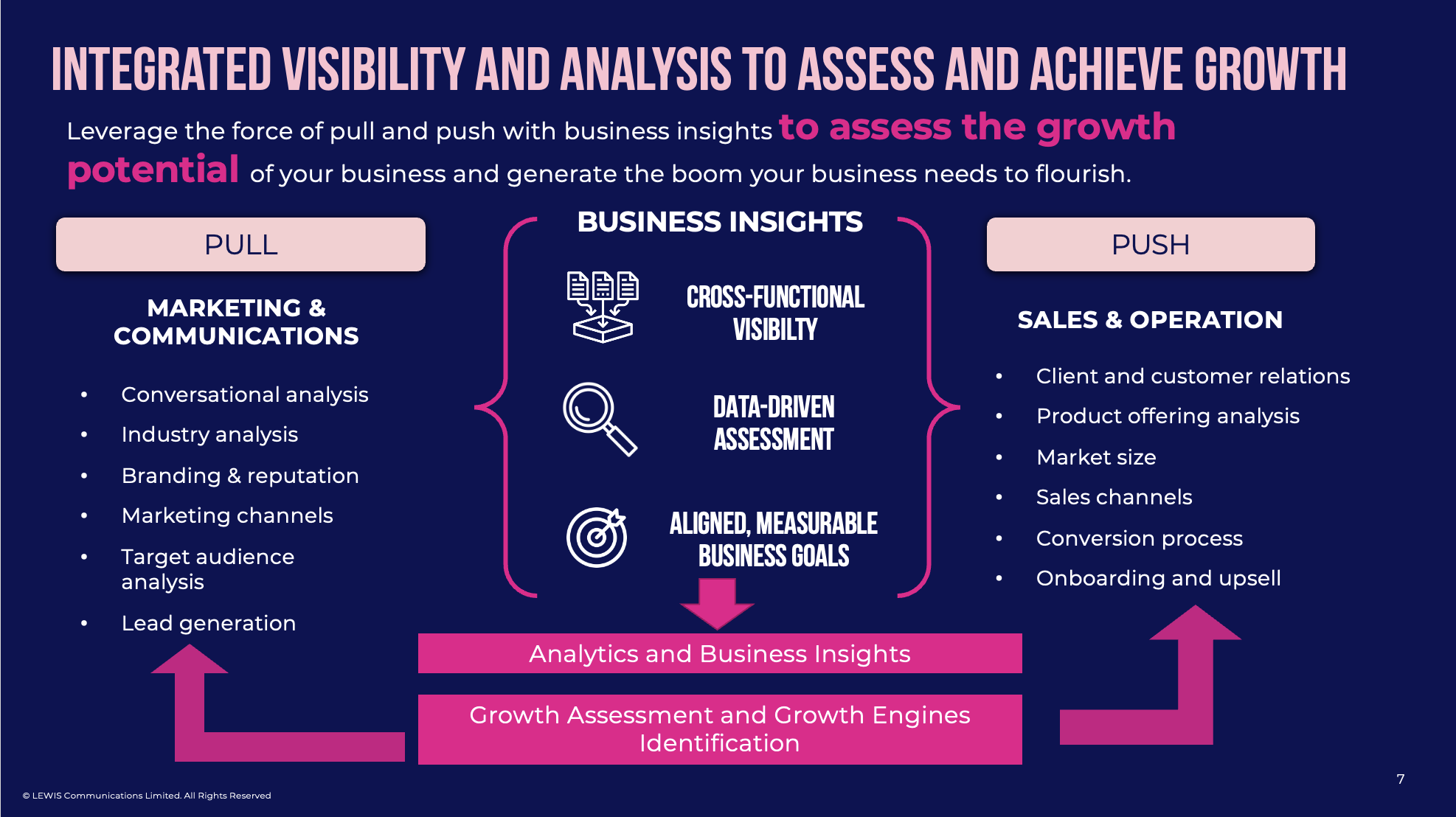To those outside, it would seem that marketing and sales would be part of the same team, working towards the same goals and outcomes. At a macro level, that is true. However, in the micro aspects of the day to day, too often, there is a canyon between the two departments. Marketing’s goals for increasing awareness and moving prospects through the funnel and sales team’s goals for closing deals can be disjointed.
Jennifer Greatrex, Managing Director at TEAM LEWIS, hosted a panel discussion with experts, David Hadlow, Jessie Lin, Linda Dickens and renowned journalist, Andrew Birmingham, to discuss how we can bridge the gap between our marketing activity and actual sales results. We touched on the power of content marketing, building a sales enablement strategy, and the importance of storytelling in today’s digital landscape.

Building a strong content marketing strategy
Finding the right content to answer the customer’s questions, nurture their opinion, and ultimately convert leads into paying customers is hard. Partly due to the pandemic and the evolution of technology we have seen our audiences consuming and interacting with content in different ways. It’s no longer as simple as getting in front of your audience with a single message as many times as possible. What this all means is we’re fighting for attention from our audiences in a way we have never had to before. We need to be thoughtful and considered in our messaging and the content that we create.
When developing a content marketing strategy “one of the first steps is understanding your audience. As marketers we must consider the many and varied things that will influence their buying decision. We really need to get under the skin of the different factors that will influence our customers,” said Linda Dickens.
Another layer to developing great content is uncovering insights into how brands can successfully reach their target audience at the right time and in the right place. “Consumers are incredibly time poor. So, if you can capture your audience’s attention for 15-minutes a week that’s considered a success,” said Andrew Birmingham. As such we must build content that is light and easily accessible for our audience. Ultimately, we want to make sure “we’re there when people are searching for content. We also want to be there when people are comparing products against other things,” said Jessie Lin.
There has never been a better time for brands to fully embrace the insights garnered from data, to not only understand what isn’t working with their current approach, but also what is working. By building personas and analysing data, brands can identify the most effective content types and platforms to ensure they are showing up in the right places at the right time and with the right content.

(TEAM LEWIS’ approach to bringing the sales and marketing function together through insights)
Why trust and a sales enablement strategy are important
Sales enablement can be hugely powerful for securing and feeding leads through the sales funnel. However, for the process to be successful both sales and marketing teams need to be aligned. They need to set goals and share the same understanding of what success looks like. “If you have the sales and marketing team aligned it’s going to make the job so much easier,” said Jessie Lin.
One of the core elements of sales and marketing is building trust with your prospects as early as possible. “As marketers we always look to build trust with our audience. However, it’s just as important to have trust internally between marketing and sales departments,” said David Hadlow. By breaking down silos and integrating sales and marketing teams to share a common goal, there is likely to be more success. David even suggested physically moving the marketing department to sit with sales so they can overhear the language and conversations that the sales team are having. Sales teams are on the front lines, interacting with customers on a daily basis, overcoming the objections and listening to what they really want. This valuable information can go a long way in helping marketing develop content and messaging that meets the needs of their audience.
The importance of storytelling in sales and marketing communication
Storytelling has stood the test of time as a critical skill in sales and marketing. In the current digital landscape businesses can no longer afford to be faceless entities. Infusing storytelling into your content marketing strategy triggers attention, persuades, and motivates potential customers – all the things we need to make a sale.
Today, there are countless pieces of content that vie for a consumer’s attention at any given time. Instead of basing communication on facts, figures, and sales pitchy details, try to produce value-driven content and inject a story into your content marketing strategy. Storytelling is 35% more persuasive than communications not based on stories.
Stories are important because they humanise a brand and make it more relatable. Brands that don’t create compelling narratives with their marketing and sales efforts are missing an opportunity to create meaningful connections with their consumers. As Linda Dickens stated, “managing to hook into something that will really resonate with people is important. As people connect really well with actual people and stories.”
Wrapping up the discussion one of the key takeaways for marketers was to connect with your sales team and really build trust with them, so that you’re aligned in terms of your goals, objectives, and content strategy. Remember that there is no magical formula for how content should be produced. What works for one brand may not work for another. It’s about building genuine connections and marketing for the moment.
Related content: FYI: Creating Effective Content Driven Thought Leadership
Want to learn more about bridging the gap between sales and marketing? Get in touch with our marketing experts today.
Keen to launch your brand’s communication and PR in the Chinese Market? Join our Webinar: Taking the Complexity out of China.



